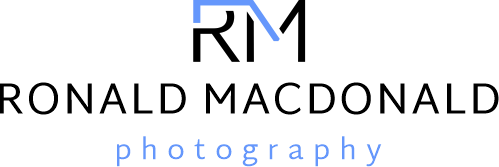Sutherland Photographic Trip
In my last blog post I mentioned how I had started the year with the resolution that I would post blogs about my photography more regularly to update folks as to what I have been up to. As you may have noticed, I've already fallen behind on my resolution—this is only my second post of the year, and I'm clearly late with updates.
This update is about a week I spent in March over in the flow country in Sutherland. I hadn’t been in this part of the world since I was a kid, and my parents headed there for a holiday. I have wanted to get back to the area for some time because of its majestic mountains, such as Suilven and Stac Pollaidh and its mystical lochs and lochans. March seemed like a good time to go as the days were sufficiently short to enable me to get out and about for sunrise and sunset, plus as it turns out there were some interesting weather patterns which facilitated some interesting day time shooting.
As some will have seen from most of my photographs, I like to have water, either sea water or that from a freshwater loch, in my compositions and I pretty much always use neutral density filters (mainly Lee filters) to calm the water and produce a more minimalist and peaceful effect. I also like using ND filters when it is windy and there are interesting clouds in the sky. You can see some of the effects of this in my most recent photographic posting of some of my Sutherland photographs in my new ‘Highlands’ Collection.
Although I like all of the photos in this new collection, I am particularly fond of the one called the lonely tree. This was inspired by a photograph that the Scottish landscape photographer Burce Percy posted on his web site some time ago of a lone tree in a loch in Sutherland. I’ve gone for a different tree and the one I photographed is in Loch Assynt. It was a rainy and misty day, and this essentially wiped out the background landscape to give the dreamy effect of a tree floating in space.
My transition to ‘1 to 1’ and ‘Cinematic’ Photography
Northton, Harris, from a Rocky outcrop.
One of my new year resolutions this year was to start a blog on my web site to discuss in more detail some of my photography. The year is already slipping by and as you can see I have just got around to this resolution. Fortunately, some of my other resolutions have been more successful and have already borne fruit such as starting to clear out a huge amount of clutter that I have accumulated in my study and print room over the years much of that clutter has been paperwork which is no longer relevant but also I have unearthed photographic prints which I’m no longer pleased with.
In this regard one thing that has struck me about my photographic journey over the years (discussed in some detail on the home page) is that with each camera I have had, until recently, I have stuck with the format ratio of the camera: so in terms of 35mm (1.5), Mamiya M645 (6x4.5cm), and Mamiya RB67 (6x7cm). Then on moving to digital sensors I was back to the 1.5 ratio with a full frame and cropped sensor although my latest camera the Fuji GFX 100s digital medium format takes me to a 1.7 ratio but in the process of moving to the Fuji I decided to move to a 1 to 1 ratio for the majority of my photography.
I find with the 1 to 1 ratio that it forces me to a tighter and more pleasing composition although that need not be the case all the time and there are times when I feel like moving to a panoramic format, especially when photographing mountain ranges. To achieve this, I used to do a lot of stitched panorama compositions with my Canon series 5D iii camera, and its successor the R5. When I had my photographic gallery (An t-Eilean Gallery), I liked the freedom of producing very large-scale panoramas in my gallery using both paper and canvas. One of the bonuses of the GFX 100s is that amongst the various pre-set ratios in the camera it has a built-in cinematic ratio of 2.7 to 1. Although of course it is possible to create such landscape photos after taking a full frame photo, I find that if you are photograph in the original 4x5 format of the camera then I compose for that photo and so to get the best from a panoramic view I prefer to compose in that mode and then perhaps make minor adjustments afterwards.


